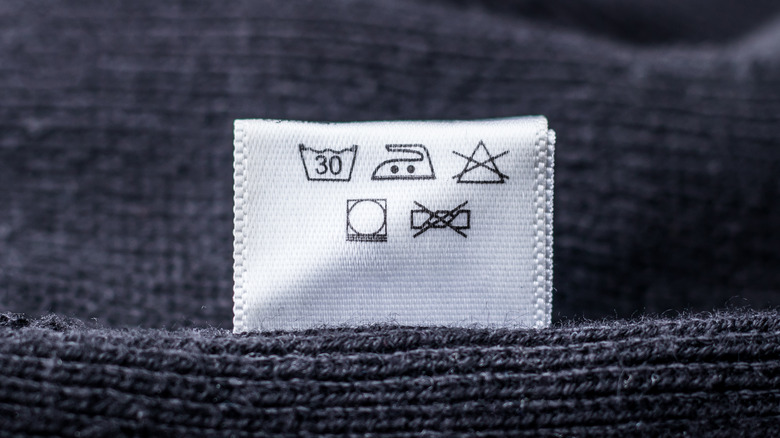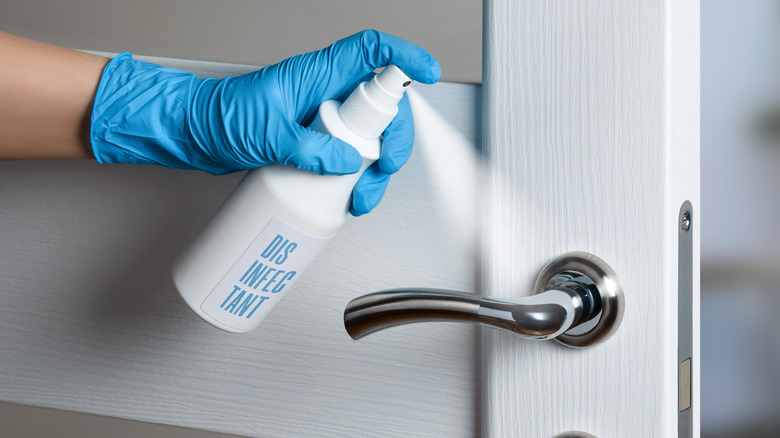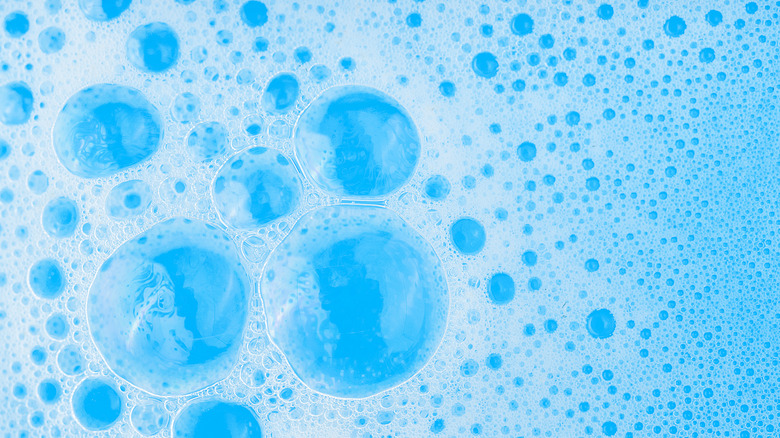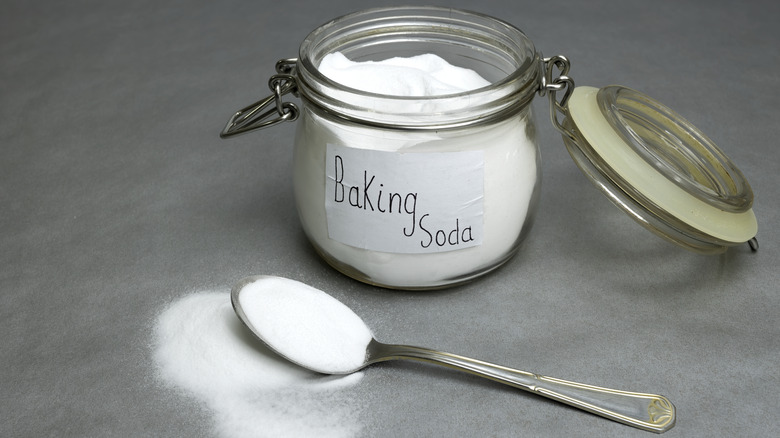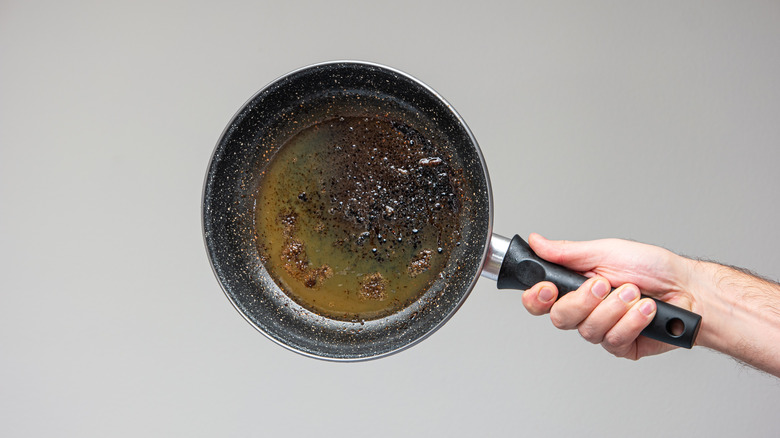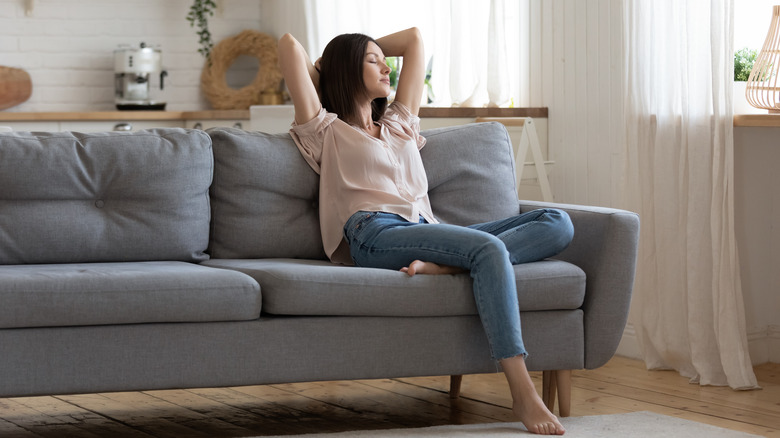7 Ways To Successfully Clean Your Microfiber Couch
A couch is one of the most important furniture pieces you can have in your home. From movie marathons to family game nights, it's fair to say a couch is a piece of furniture that is used nearly every day for some of the most important home activities. On top of functionality, a couch also sets the tone of a home by creating a sense of warmth and comfort. To that end, you must ensure your couch stays clean regardless of the events it endures. Similar to other common furniture items in your home, a couch must also be cleaned routinely.
Couches come in a variety of shapes, styles, and materials, some being easier to clean than other. Additionally, as opposed to other types of couches, microfiber couches have a reputation for being somewhat easier to clean, per Joybird. Regardless of the material, cleaning a couch can still be an overwhelming process. With a furniture item as expensive as a couch, you do not want to risk ruining the fabric from a simple routine cleaning, so here are some of the best ways to successfully and safely clean your microfiber couch.
1. Always check the tag first
Before diving into any couch cleaning method, it is important to check your couch's manufacturing label. The manufacturing label informs you of the cleaners and cleaning methods that are and are not safe for your specific couch (per Family Handyman). Using the wrong cleaner could cause a great deal of damage to the fabric of your couch. Based on your specific couch, you may need to use a water-based cleaning solution as opposed to a solvent-based cleaner. Your couch could also be sensitive to all cleaners in general, meaning it can only be cleaned with a vacuum or brush.
According to Furniture Repairman, the manufacturing label is usually located under the couch cushions, if they are removable cushions. If the cushions are not removable, the label would then be attached to the bottom of the couch. If you have trouble locating the label, you can also look on the manufacturer's website.
2. Rubbing alcohol
Sometimes it is necessary to give your couch a deeper clean, especially when needing to remove stubborn stains. In that case, My Domaine recommends using a rubbing alcohol solution if your couch label recommends solvent-based cleaners. Couches that need a water-based cleaning solution should follow the soap and water cleaning method instead.
To clean your couch with rubbing alcohol, simply use a spray bottle to spray the rubbing alcohol on the surface of the couch, then use the rough side a sponge to clean the area. Colored sponges should be avoided because their color tends to rub-off on the couch's fabric. When using this method, be sure to work in small increments; clean one small section before moving on to another section. It is not recommended to clean the entire couch at once. When finished, let the fabric dry completely before brushing over it with a clean bristled brush. This is done in a circular motion for the best results.
3. Soap and water
When cleaning a couch with soap and water, ensure you use soap suds instead of a soap and water mixture. To create soap suds, combine liquid dishwashing soap with water and whisk until it creates a lot of soapy suds. Spread an even layer of the suds on top of the couch surface you want to clean. Then, use a sponge to scrub. Rinse the sponge frequently with clean water, and ensure it is as dry as possible before scrubbing again. Once you are done scrubbing, use a clean, damp microfiber cloth to wipe the cleaned area. Let the fabric dry completely before brushing over with a clean bristled brush, per The Spruce.
Similar to when using rubbing alcohol, cleaning your microfiber couch with soap and water should also be done in small increments. This means you should only use this method to clean one small section at a time. Using a white sponge is also recommended because colored sponges tend to rub their color of on the fabric, they are cleaning.
4. Baking soda to deodorize
Due to their constant usage and the inability to use common cleaners and refreshers on their sensitive fabrics, couches can easily begin to give off unpleasant odors. Deodorizing a microfiber couch, however, is not a difficult process. With only a little bit of baking soda, you can eliminate the odors that are hiding within your couch, shares Hunker.
Start by thoroughly vacuuming your couch. Ensure you vacuum not only the surface, but between and under the cushions as well. Particle and pet hair could be hiding in those areas of the couch, causing the odors. Although some odors can disappear simply through vacuuming, something extra is needed for the more stubborn odors. When finished vacuuming, sprinkle the surface of your couch with baking soda. Let the baking soda sit overnight before vacuuming it up the next day. This method is also great when wanting to clean and deodorize your carpet.
5. Getting rid of grease stains
Sometimes sharing a meal on the couch can lead to some unwanted grease stains. Although removing grease from your couch may seem like a hassle, The Spruce recommends a simple and easy way to get it done using cornstarch. Cornstarch naturally absorbs grease, and it doesn't pose any threat of ruining your couch's fabric. According to Lupilion, baking soda is also a great cleaning agent when it comes to removing grease. Cornstarch, however, provides extra help when removing grease stains from tougher surfaces, like clothes and fabric.
Simply sprinkle a little bit of cornstarch on the spot and scrub with an old toothbrush. Let the cornstarch sit for at least an hour, then vacuum away. This method can be repeated as many times as needed. When finished, spot clean the area with either the alcohol or soap and water technique. This is all dependent on the information your couch's manufacturing tag presents.
6. Gum removal
Sticky gum can be a hassle to get off any surface, but there are several different techniques you can use to safely remove gum from your microfiber couch. Home Steady recommends using ice cubes to harden the gum, allowing it to easily peel off in one piece. Ensure the gum is completely firm before attempting to remove it because this will keep the gum in one easy lump during the removal process. Other than ice cubes, you can also use a can of compressed air to freeze the gum before removal, as noted by Spot Removal Guide.
To remove the gum after freezing, it is most effective to use a butter knife. A vacuum cleaner can also be used to catch leftover rescue after removal. When finished, spot clean with the technique that is best fit for your specific couch, depending on what is stated on your couch's manufacturing label.
7. Routine maintenance
To keep your microfiber couch looking its very best, it's important to include it into your regular cleaning routine. Better Homes & Gardens recommends vacuuming your couch as often as you vacuum your floor. The easiest thing to do is use the upholstery attachment on your vacuum to vacuum your couch while you are already using the vacuum on the floor in the surrounding areas. This should be done on the surface as well as under and between the cushions. Doing so prevents the build-up of all types of particles that settle onto your couch's surface, keeping it in a better condition and making it overall clean.
If you have pets at home, limiting their access to the couch helps make routine maintenance even easier by limiting the build-up of pet hair particles on the couch's surface (per K9 Of Mine). It also prevents further damage that could be caused to the fabric from their claws. Cleaning up spills as quickly as possible also prevent stains that could further ruin your couch's fabric.

